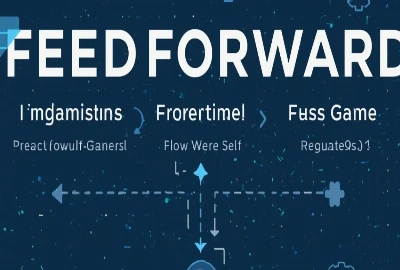Blurred and Branded: The Disappearing Line Between Persona and Person

In the digital age, the concept of “authenticity” has been repackaged, rebranded, and sold back to us as both a virtue and a marketing strategy. Once upon a time, your “persona” was something you consciously performed—actors had stage names, authors had pen names, and public figures had PR-crafted images. Today, however, the average person also lives with a brand—an online persona polished for feeds, followers, and algorithms. The line between who we are and who we perform has never been thinner.
This article explores how the digital economy of attention has blurred identity, how social media rewards performance over presence, and what happens when branding becomes the default mode of being.
The Rise of the Digital Self: From Person to Persona

Social Media as a Stage
Every platform—from Instagram to LinkedIn—has transformed into a performance space. Users carefully curate what they post, filter how they appear, and calculate when to share it. Even “casual” posts are rarely casual anymore. The moment we hit record or compose a caption, we enter the performative zone of persona management. The digital self is not just an extension of who we are—it’s a consciously edited version meant to signal identity, success, and belonging.
The Influence of the Algorithm
Algorithms act as invisible directors, subtly shaping what we share and how we express ourselves. A post that gains traction doesn’t just boost confidence—it reinforces behavior. Likes, comments, and shares become psychological cues that inform our next move. Over time, we begin to internalize these signals, prioritizing what performs well over what feels real. Authenticity becomes a calculated decision.
The Feedback Loop of Visibility
Visibility, once a privilege, is now a necessity for relevance. The digital self is sustained by attention, and attention is fueled by constant visibility. But the more we perform, the more distance we create between our digital persona and our private self. This feedback loop breeds anxiety, identity confusion, and the persistent fear of invisibility in a world that rewards the hyper-visible.
Branding as Identity: When Personality Becomes a Product

The Rise of the Personal Brand
The phrase “personal brand” used to belong to marketers and entrepreneurs—but today, it’s everyone’s mantra. Whether you’re a freelancer, influencer, or everyday user, your online presence is expected to be cohesive, strategic, and visually appealing. Personality traits—once spontaneous expressions of individuality—are now reinterpreted as brand assets. “Quirky,” “relatable,” “real”—all become part of a digital identity designed for engagement.
The Performance of Authenticity
Ironically, the more we try to be authentic online, the more performative we become. Brands use imperfection—unedited photos, “vulnerable” captions, behind-the-scenes moments—as proof of humanity. But when authenticity itself becomes a marketing tactic, the line between sincerity and strategy fades. The question isn’t just who am I? but who do people think I am—and how can I maintain that image?
When the Self Becomes the Brand
For influencers, entrepreneurs, and creators, the personal brand often overshadows the person behind it. Success becomes tied to engagement rates, follower counts, and aesthetic consistency. When your livelihood depends on your persona, deviating from it feels risky. The result? A kind of identity imprisonment—where every action, emotion, or belief must align with the brand narrative you’ve built.
The Algorithmic Mirror: How Platforms Shape Personality

Curation and Confirmation
Algorithms curate content based on engagement history, effectively trapping users in echo chambers of familiarity. This reinforcement doesn’t just affect opinions—it shapes self-perception. When the digital mirror reflects only what gets rewarded, we learn to see ourselves through algorithmic eyes. Over time, we adjust our tone, style, and even humor to fit what’s most “liked.”
Data as Identity
Each interaction leaves behind data points that feed machine learning models. These models know what we watch, what we skip, and even how long we linger on a post. In a strange twist, our data often represents us more accurately than our self-descriptions. Yet, this representation isn’t neutral—it’s designed to predict and influence behavior, turning our identity into an algorithmic construct.
Influence Fatigue
Constant exposure to algorithm-driven validation leads to what psychologists call influence fatigue—a numbing exhaustion from maintaining visibility. We begin to feel disconnected from our digital image, even as we feed it daily. This creates an emotional split: one self performing, another observing, and both struggling to feel real.
Emotional Commodities: Selling Relatability and Empathy

The Market for Emotion
Emotions are now monetized assets. Online creators share intimate confessions not just for catharsis but for connection—and, often, for engagement. Vulnerability becomes strategic, sadness aestheticized, and healing content packaged for virality. The emotional labor of being “relatable” becomes part of the brand strategy, blurring empathy with exploitation.
Parasocial Bonds and Perceived Intimacy
Audiences no longer follow just for content—they follow for connection. Parasocial relationships, where followers feel emotionally close to creators, turn identity into a performance of friendship. Creators must constantly balance accessibility and boundaries, ensuring they appear approachable yet aspirational. Over time, both sides forget the relationship is one-sided.
Emotional Burnout and the Price of Being Known
Maintaining emotional transparency online can be draining. When every life event becomes potential content, privacy feels like a luxury. Emotional burnout occurs when creators feel compelled to share even when they have nothing left to give. The personal cost of being perpetually “real” online is profound: it’s the erosion of self as content.
The Psychology of the Blurred Self: Identity, Anxiety, and Authenticity

Cognitive Dissonance and the Digital Double
Living with two selves—one digital, one private—creates tension. When these versions diverge too far, users experience cognitive dissonance: the discomfort of living between truth and performance. The digital double begins to overshadow the original, and people start measuring self-worth through metrics like followers and engagement rather than real-life validation.
The Anxiety of Inconsistency
Online, consistency equals credibility. But humans are inherently inconsistent—we change moods, interests, and beliefs. Social media, however, punishes inconsistency; rebrands are risky, and silence is suspect. This pressure to remain “on-brand” at all times leads to performative rigidity and chronic anxiety about being misunderstood or forgotten.
The Myth of Authenticity
Authenticity is often presented as the antidote to digital performance—but even authenticity has been commodified. The “raw” and “real” persona has its own aesthetic: carefully imperfect, emotionally curated, and algorithmically optimized. The result? A paradox where being authentic requires just as much calculation as being fake.



